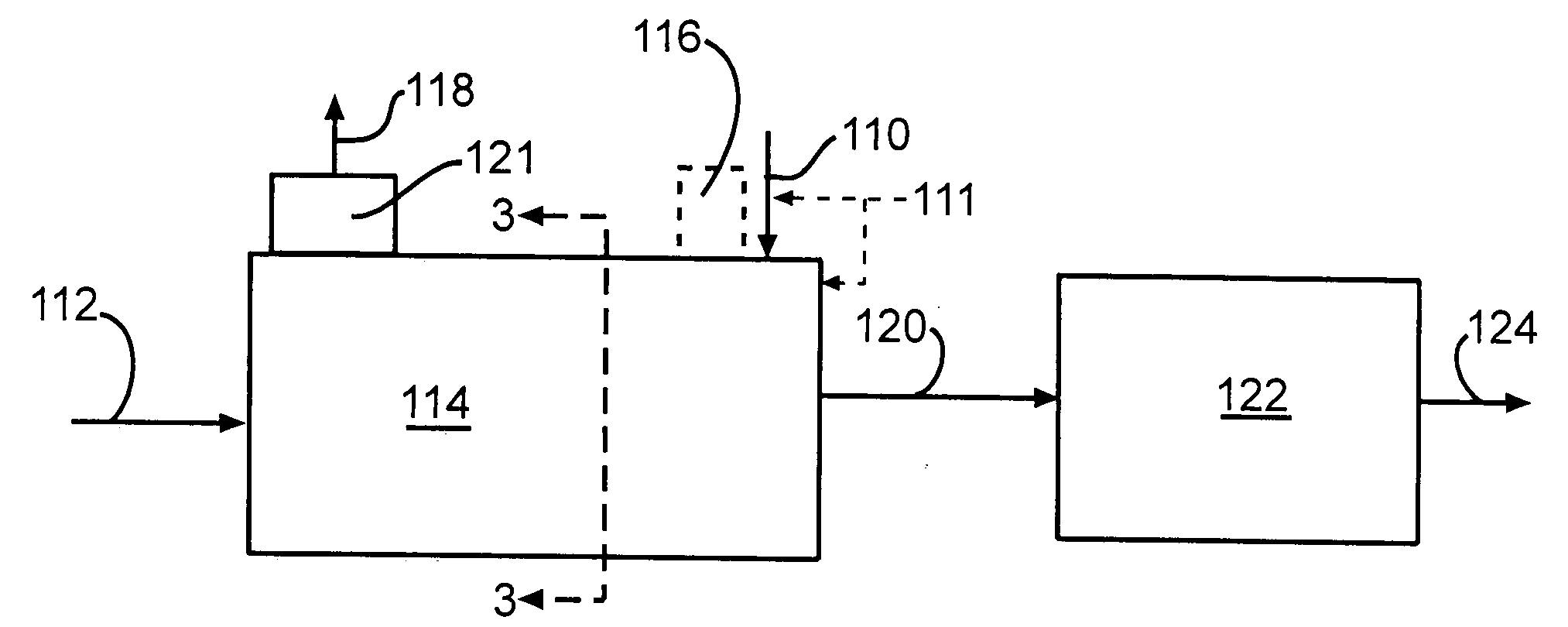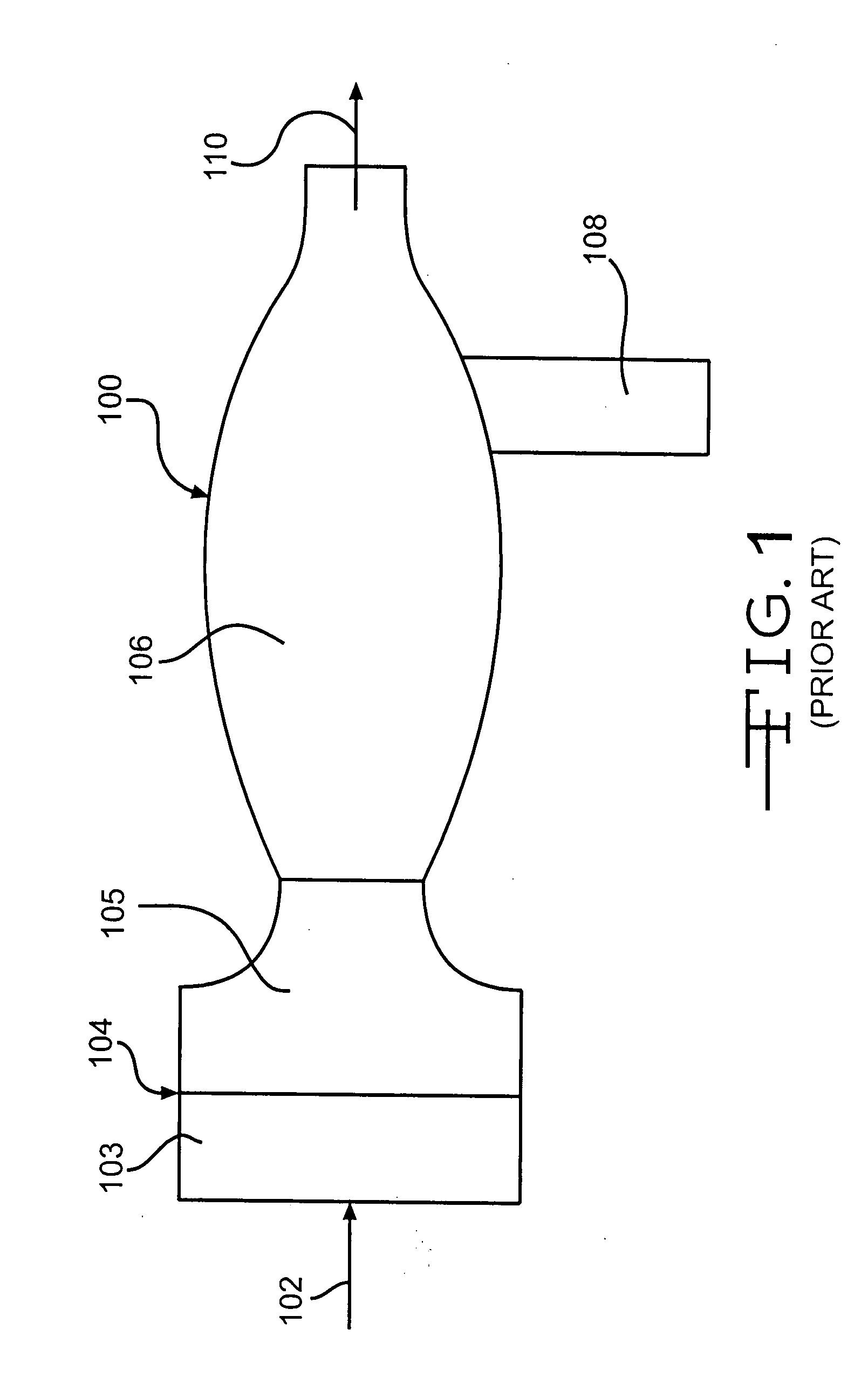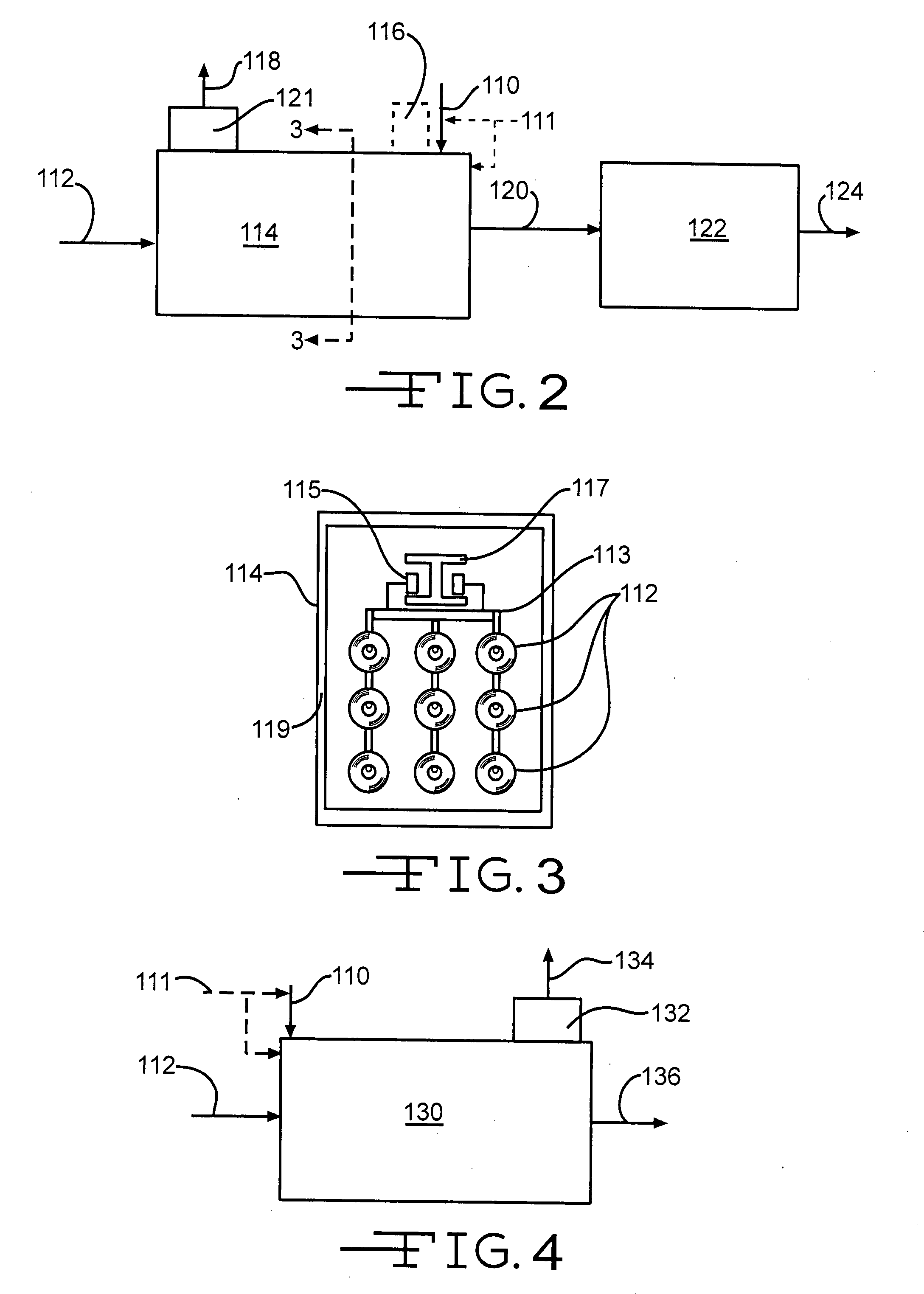Method of drying roving products
a technology of roving products and roving wheels, which is applied in the direction of drying machines with progressive movements, furnaces, separation processes, etc., can solve the problems of high cost of total electrical drying and often unusable sizing techniques, and achieves the reduction or elimination of significant resin migration, reducing drying costs, and minimizing scraps
- Summary
- Abstract
- Description
- Claims
- Application Information
AI Technical Summary
Benefits of technology
Problems solved by technology
Method used
Image
Examples
Embodiment Construction
[0015]FIG. 1 is a schematic of a typical gas turbine driven electrical generating system 1. In this system an oxidizing gas 102 including air, oxygen or an oxygen rich mixture is fed to a compressor 103, driven by a heat engine such as a gas turbine 106. The oxidizing gas 102 is compressed and as it exits the compressor 103 into a combustion chamber 105, is mixed with a fuel 104 and ignited producing high pressure hot gases 107 that pass through the gas turbine 106 impacting blades in the turbine 106 causing them to rotate a shaft that drives the compressor 102 and an electrical generator 108 generating electricity. The high pressure hot gases 107 loose pressure as they expend work on the turbine blades and exit the gas turbine 106 as low pressure or atmospheric pressure hot gases 110, usually at a temperature of at least about 700 degrees F. or higher. Exhaust gas 110 temperatures of 1000 degrees F. or higher are fairly common.
[0016]In the invention, the hot waste exhaust gases 110...
PUM
| Property | Measurement | Unit |
|---|---|---|
| pressure | aaaaa | aaaaa |
| pressure | aaaaa | aaaaa |
| size | aaaaa | aaaaa |
Abstract
Description
Claims
Application Information
 Login to View More
Login to View More - R&D
- Intellectual Property
- Life Sciences
- Materials
- Tech Scout
- Unparalleled Data Quality
- Higher Quality Content
- 60% Fewer Hallucinations
Browse by: Latest US Patents, China's latest patents, Technical Efficacy Thesaurus, Application Domain, Technology Topic, Popular Technical Reports.
© 2025 PatSnap. All rights reserved.Legal|Privacy policy|Modern Slavery Act Transparency Statement|Sitemap|About US| Contact US: help@patsnap.com



